The open road provides a pathway to the uncontrolled spirit, a state of being that is universally felt yet so challenging to capture through a medium.
Gone South with Vita Brevis Films from VITA BREVIS FILMS on Vimeo.
lundi 29 juin 2015
VDEV Dijon VHC : Lola et Chevron se partagent les victoires
par Claude Foubert (Endurance-Info.com)
Le plateau de la deuxième manche du Challenge d’Endurance VHC était superbe, quantitativement et qualitativement, avec 26 voitures engagées dont 10 prototypes. Deux courses étaient au menu du week-end.
Course 1
Qualifications
Les protos avaient fait la loi, notamment les deux Lola T288 Châteaux Sport Auto qui avaient nettement dominé la concurrence.
Patrice Lafargue, stakhanoviste de l’asphalte, avait décroché la pole position avec un chrono de 1’19’’746 sur la Lola n°17 qu’il partageait avec son ‘’vieux’’ complice Frédéric Da Rocha, mais la Lola n°42 de Mathieu et Jean-Baptiste Châteaux n’était pas loin, en 1’19’’972.
Le troisième, John Doe (Chevron B60 Classic Racing Experience n°121) était relégué à plus de cinq secondes, et le quatrième, Franck Metzger (Cesca Grac n°6), à près de sept secondes.
Bernard Moreau, multiple Champion en VHC, était le meilleur des GT avec sa Porsche 911 RSR 3 litres Polybaie n°1, en 1’30’’326, dixième chrono absolu.
Course
La Lola n°17 capitulait très vite, victime d’ennuis mécaniques, et le relais était pris par la Lola T298 n°42, mais celle-ci était sous la menace de la Cesca Grac de Metzger. Alors que la Lola filait vers la victoire, Metzger recevait un drive through (non-respect du temps d’arrêt imparti mais il sauvait sa deuxième place devant la March 81 S du team Palmyr de Nelson/Christophe Kubryk, tandis que Bernard Moreau, quatrième et vainqueur en GT, enrichissait sa collection de trophées.
Le résultat est ici
Course 2
Dans cette deuxième course, c’était au tour de la Lola n°42, victorieuse de la manche précédente, de capituler au bout de six tours seulement.
Cette fois cependant, la Lola n°17 de Lafargue/Da Rocha allait baisser pavillon devant la Chevron B60 de John Doe. Patrice Lafargue avait pourtant été le plus rapide en course avec un beau chrono de 1’19’’244, mais c’est bien la Chevron qui l’emportait avec une vingtaine de secondes d’avance.
Metzger avait écopé d’un drive through, comme dans la première manche –même motif, même punition- mais il conservait cependant la troisième place, devant Emmanuel Lion (Osella PA 6 Wassermann Racing n°66) qui devançait lui-même Emmanuel Brigand (Porsche 911 Crubilé Sport n°91), vainqueur en GT devant Bernard Moreau, l’ordre d’arrivée des deux Porsche étant inversé dans seconde course.
Le résultat est là
For The Open Road by Belstaff
Belstaff presents For The Open Road featuring David Beckham, a documentation of five British bikers on a journey from the Goodwood estate in West Sussex to New Bond Street in the heart of London.
http://www.belstaff.com
http://www.belstaff.com
Unique Land Rover Defender marks two millionth car built at Solihull

This one-off Land Rover Defender has been built to commemorate the two million Series models and Defenders built at Solihull since 1947…
It's the little things...
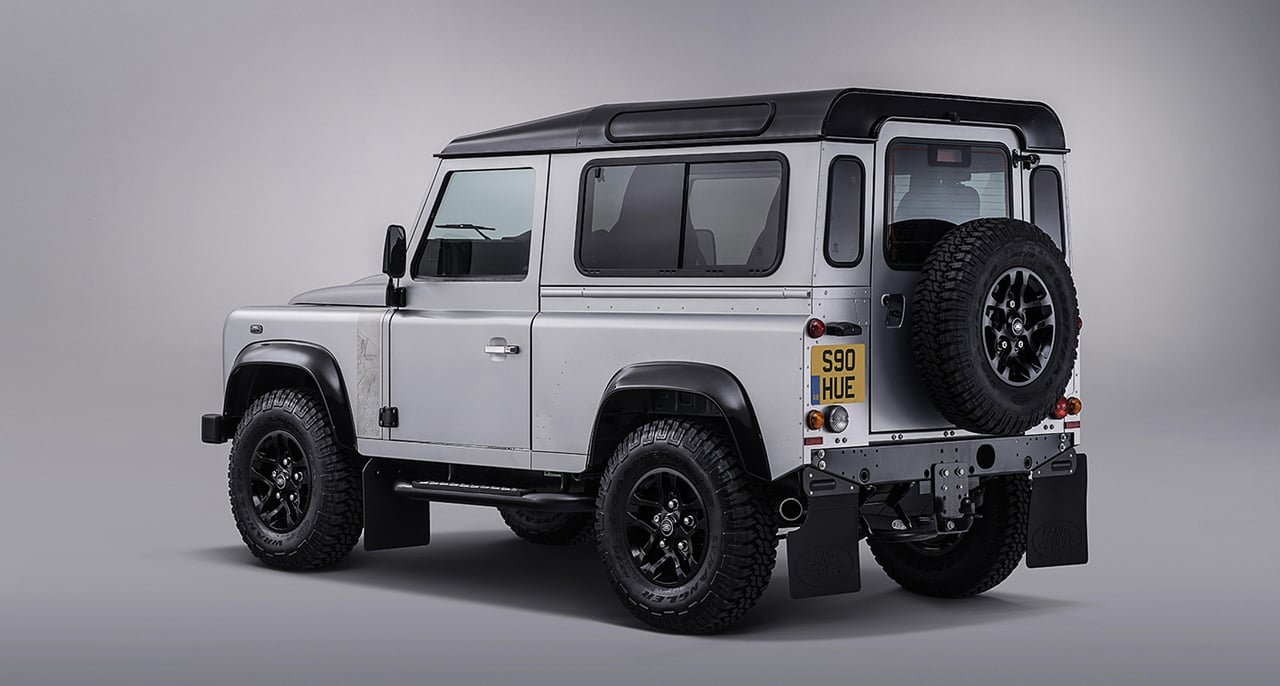
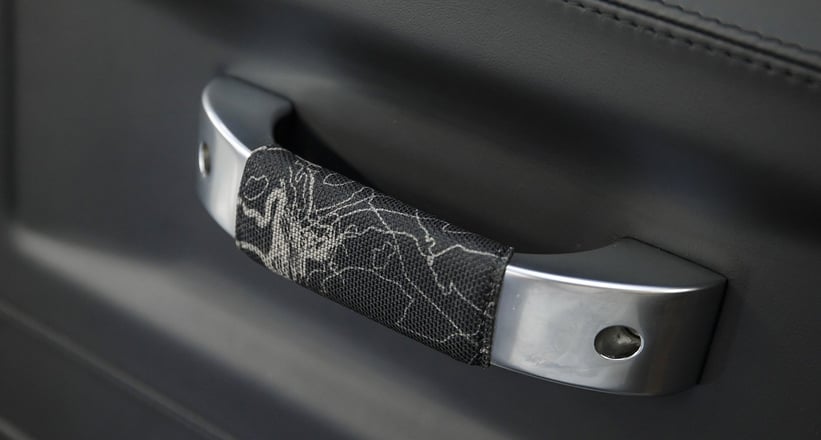
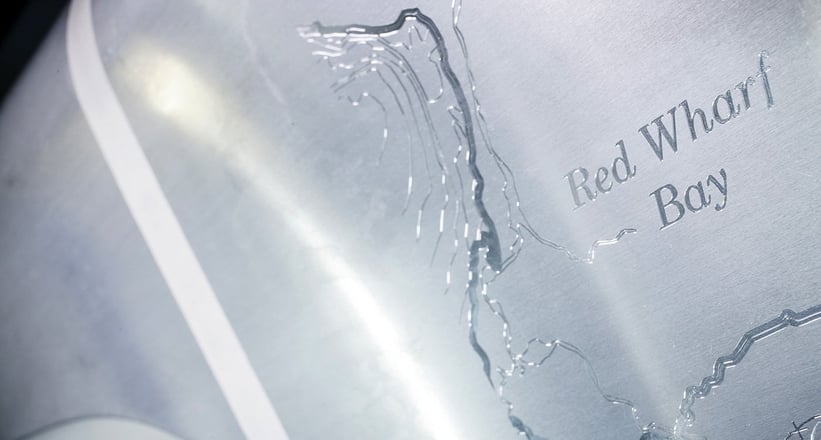
As the Defender enters its final phase of production, Land Rover has aptly created ‘Defender 2,000,000’, a bespoke example marking two million cars and almost seven decades of production at its Solihull factory. Built and assembled with the help of several well-known advocates of the Defender, the car will be sold by Bonhams in December, with the proceeds going to charity.

Special features include engraved/embossed maps of Red Wharf Bay, where the original Land Rover was first drawn in the sand, Indus Silver satin paint, an aluminium plaque signed by everyone who helped assemble the car, and ‘S90 HUE’ registration plates, a throwback to the ‘HUE 166’ plates worn on the first ever pre-production Land Rover.
Photos: Land Rover
You can find many more Land Rover Defenders for sale in the Classic Driver Market.
Imitation game – Auctionata to offer replica Benelli 250 in Berlin

They say imitation is the sincerest form of flattery. Whether or not that's the case, we’re utterly taken with this replica Benelli 250 to be offered by Auctionata at its ‘Classic Cars’ sale on 26 June…

Labour of love
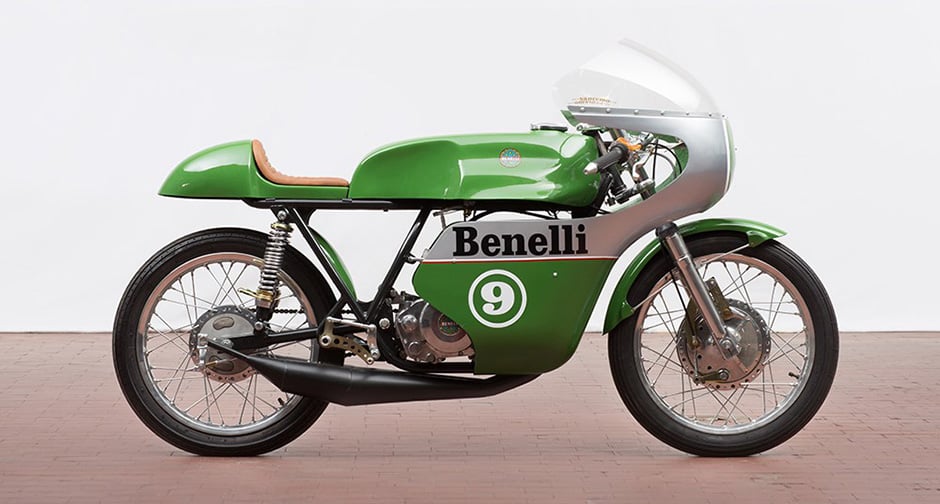
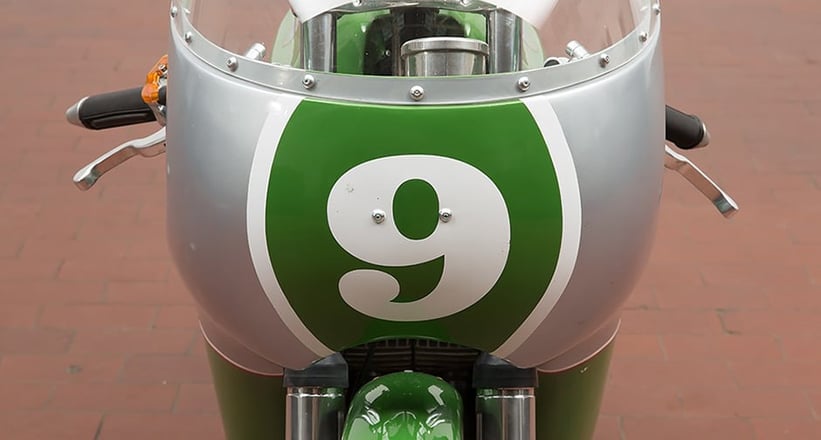
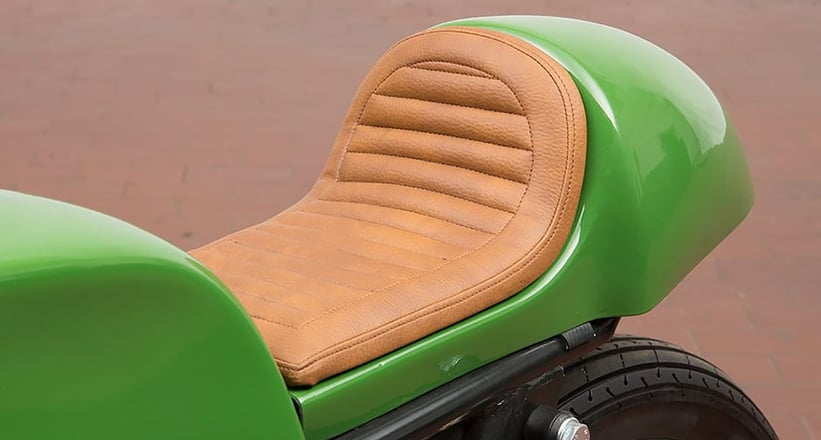
An exact replica of the racing 250 from 1968, this Benelli was built to the original plans, comprising authentic parts amassed from markets and classic motorcycle events over a number of years. As such, it apparently runs just like the real one, too. Perhaps most stunning is that custom-built front panel, merging seamlessly with the rest of the petite bike, giving it that unmistakeable, almost romantic ’60s Italian Grand Prix character. We also love the hand-stitched leather seat (in tan, naturally), attesting to the high standard to which the whole bike has been finished. Estimated to fetch between 15,000 and 20,000 euros, it will cross the block at Auctionata’s evening ‘Classic Cars’ sale, on 26 June 2015 in Berlin.

Photos: Auctionata
Auctionata's two 'Classic Cars' sales will take place on 26 June 2015 at the Autodepot Berlin. You can find the full catalogues listed in the Classic Driver Market.
DEUS BIKE BUILD OFF 2015 TOKYO.















http://deuscustoms.com/blog/deus-bike-build-off-tokyo/…
MOKKA CYCLES R75/6 HUSKYMER
There comes a point when it’s time to take the next step with your business. To not move forward and grow, is to sit and stagnate. For many bike builders this point is going from personal or pet projects to commissions. Sure, it provides an element of relief for the builder, a guaranteed sale and a brief to follow. But with it comes new pressures. You’re now building to a spec, another’s idea of what perfection is.
How do you do this while maintaining the style and integrity you’ve based your company on? If you’re fortunate, the client will come to you because of your reputation and the bikes you’ve produced, and they’ll let you crack on. If not, then do you risk turning away a commission because it’s not the right fit..?
Fortunately for Arpi at Mokka Cycles in the Czech Republic, his client shared the same crazy vision he had and trust was implicit from the off. With a number of small capacity builds behind them it was the perfect time for Mokka to step up and tackle a big build, the business growing with the cubic capacity.
The BMW R-series is still a darling of the Alt.Custom world, but a Brat seat and lashings of matt black spray no longer cut the mustard. To redefine the bike would mean changing the familiar silhouette and replacing the domineering BMW tank; something with it’s own character would be needed.
So it was with the discovery of a well used Husqvarna WR tank, that the rest of the build gelled. From that point on each part of the bike was shaped and styled to match and flow with the lines of the Swedish statement piece. And thankfully, it was left in all it’s original glory, Arpi modifying the frame to fit the tank rather than vice-versa.
Regardless of your opinion on mixing up brand names ‘twixt chassis and tank, I think most would agree that repainting an original Husky WR tank would be a crime. Besides it’s iconic red and chrome colour-way, the shape is also instantly recognisable, so to try and disguise it is a futile act.
As with all Mokka bikes, the mechanicals haven’t just received a coat of black paint and a blessing. Engine out and stripped, the tired R75 lump received new pistons, rings, bearings and significant machining of the heads to help it box-on for a few more years. As Arpi challenges himself ever further he made the neat Enduro style exhaust from Stainless steel, swinging up the left side of the bike and out of a drops harm.
With the CNC machine fully fired up, Mokka’s range of custom parts is growing. Besides their beautifully simple handlebar switch gear on the braced bars, the Huskymer features some bar-end turn signals. Made at the client’s behest, they are ‘Bright as hell!’ according to Arpi and will be in the Mokka shop imminently. There’s a whole lot more satisfaction in making items like these rather than just clicking ‘Add to Basket’.
The new subframe stops the black fluted seat abruptly; the main stays rise through the loop to cut it off at the suspensiuon pickups. As the tank sits a little higher than the original the seat swoops upwards with vintage enduro vigour to tie into the slope of the tank.
The bunted seat affords the rear portion some useful storage space, a tin of beard oil and some organic Quinoa can be held in place with the leather strapping if that’s your fancy.
With the engine back in the bike and the chassis built up with refurbished wheels and suspension, the brakes needed a good going over. Fully rebuilt, the calipers got new pistons and seals, while an Accossato master cylinder fires fluid through braided lines. Clamping down on a new Brembo disc, the stopping power should no longer be a white-eyed issue.
Alloy mudguards, a new cloth wrapped wiring loom and minimalist lighting all work together with the tank to give a mid-seventies enduro vibe to the big bad boxer.
The blending of two iconic designs certainly takes chutzpah Getting them to work in harmony as Arpi’s managed with the Huskymer means that Mokka’s first big-cc build will be far from their last. If the reception the bike received at the London Bike Shed event is anything to go by, commissions will be the new norm for Mokka from now on.
Keep an eye on Arpi and Mokka via their FB page for all the latest build updates.
via The Bike Shed
WE DISCOVER CLARK GABLE’S JAGUAR XK120 HIDDEN BENEATH THE BRICKYARD
by Benjamin Shahrabani via


Photography by Nate Stevens
Clark Gable would win over audiences and critics alike with performances in films like A Free Soul, Red Dust, and, but his first forays into Tinseltown were met with a less than enthusiastic response. Initially considered too rough to play a romantic lead by studio decision makers, it was not until undergoing grooming and training by his acting coach that Gable came to epitomize the American ideal of masculinity and virility.
Gable would make the top-ten box office list 16 times, win an Oscar for his role in Frank Capra's It Happened One Night, and is immortalized by his delivery of the line "Frankly, my dear, I don't give a damn,” in Gone with the Wind—among the most quoted in the history of cinema. He would also play a race car driver in To Please a Lady, and loved automobiles, so what’s a king of his industry to do?
Buy lots of them, so he could squire around the most beautiful leading ladies of the day in style.
Many people consider taste to be a purely subjective attribute, but both subjectively and objectively, Gable had taste in spades when it came to cars. As he gained fame and fortune, he was able to afford the best, and some that entered his stable were the 1935 Duesenberg Model JN that played its own part in Gable's famed relationship with Hollywood beauty Carole Lombard, as well as a 1936 Duesenberg SSJ Speedster, 1937 Ford Lincoln-Zephyr V12, 1938 Packard Eight Convertible Victoria, 1948 Jaguar 3.5-Liter Mark IV Drophead Coupe, 1955 Mercedes-Benz Gullwing, and a 1956 Mercedes-Benz 300 Sc.
In 1948, the new Jaguar XK120 would be unveiled to the public—and Gable was smitten. He wanted the car as badly as another starlet he may have tried to seduce. Originally intended as a limited-production model to raise interest for a forthcoming series of sedans powered by the same, and new dual-overhead-camshaft inline six-cylinder engine with hemispherical—or “hemi”—combustion chambers, orders for the XK120 immediately exceeded capacity, but there was also steak to go along with the sizzle.
All XK120s had independent torsion bar front suspension, semi-elliptic leaf springs at the rear, recirculating ball steering, and telescopically adjustable steering column, a sophisticated setup for the day. The six-cylinder engine displaced 3.4 liters and produced 160 bhp, and was said to be capable of 120 mph. That would make sense for the XK120 nomenclature, however the car was capable of more, hitting more than 130 mph in later testing. Zero-to-60 mph took place in less than 10 seconds, quick for the day
.
Jaguar initially thought it might probably sell a couple hundred of the new model, but demand was so strong that the first cars had their bodies made out of hand-beaten aluminum until the actual production tooling was ready. While most of these early aluminum cars were destined for racing, Gable’s first XK120 was one of the first customer cars to leave the Holbrook Lane production line in June, 1949.
Our feature car here is one of Gable’s other three XK120s, and this one was gifted to him by the Indianapolis Motor Speedway owner at the time, Anton "Tony" Hulman, Jr., while the actor was in town filming To Please A Woman. He would keep it stored there, and amazingly, the car would only see use once a year in May when Gable, a race fan, would come back into town to see the race.
Today, only 6,500 miles register on the odometer.
The unpaid celebrity endorsement did no harm to the sales figures for the car, and the actor loved the model so much he that he would go on to own three other XK120s. Gable would also write in a 1950 issue of Road & Track magazine his thoughts on the car.
Titled My Favorite Sports Car…, Gable would espouse on his attempt to reach the XK120’s official 132 mph top speed, when he managed to coax 124 mph out of his completely stock and unmodified car. A total of 12,078 XK120s were sold through the car’s production run to discriminating individuals, and while today celebrities and cars are nothing new, some celebrities, like Gable, were much more interested in the intrinsic qualities of the car they bought.
Most celebrity cars change hands often, but this one—hidden away from prying eyes for more than 40 years at one of the most traffic’d places on earth for car enthusiasts—must be one Gable would instantly feel at home in more than 50 years after his death.
|
Inscription à :
Articles (Atom)

